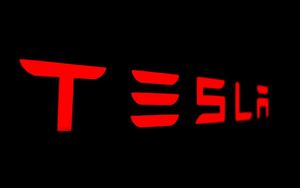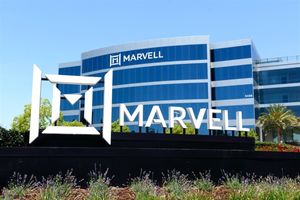
Healthcare tech company Omnicell (NASDAQ: OMCL) beat Wall Street’s revenue expectations in Q1 CY2025, with sales up 9.6% year on year to $269.7 million. On the other hand, next quarter’s revenue guidance of $275 million was less impressive, coming in 0.7% below analysts’ estimates. Its non-GAAP profit of $0.26 per share was 27.1% above analysts’ consensus estimates.
Is now the time to buy OMCL? Find out in our full research report (it’s free).
Omnicell (OMCL) Q1 CY2025 Highlights:
- Revenue: $269.7 million vs analyst estimates of $260 million (9.6% year-on-year growth, 3.7% beat)
- Adjusted EPS: $0.26 vs analyst estimates of $0.20 (27.1% beat)
- Adjusted EBITDA: $23.59 million vs analyst estimates of $21.46 million (8.7% margin, 9.9% beat)
- The company reconfirmed its revenue guidance for the full year of $1.13 billion at the midpoint
- Management lowered its full-year Adjusted EPS guidance to $1.33 at the midpoint, a 24.3% decrease
- EBITDA guidance for the full year is $122.5 million at the midpoint, below analyst estimates of $145 million
- Operating Margin: -4.3%, up from -8.9% in the same quarter last year
- Free Cash Flow Margin: 5.5%, down from 16.7% in the same quarter last year
- Market Capitalization: $1.31 billion
StockStory’s Take
Omnicell’s Q1 results were driven by continued demand for its medication management platform, with particular momentum in its XT Amplify program and specialty pharmacy services. CEO Randall Lipps emphasized that market share gains, recurring revenue growth, and strong customer interest in the company’s innovation roadmap shaped the quarter’s performance. Management noted, “Our future growth is expected to come from three core levers,” highlighting expansion in both inpatient and outpatient settings, growth in recurring revenue, and scaling the OmniSphere cloud platform.
Looking ahead, guidance for the year reflects significant uncertainty due to new tariffs on components sourced from China, which management estimates will reduce 2025 non-GAAP EBITDA by about $40 million. CFO Nchacha Etta explained, “We are reducing the ranges for our full year 2025 non-GAAP EBITDA and non-GAAP earnings per share guidance to reflect that currently expected partial year potential impact from tariffs.” The company is attempting to mitigate these effects by accelerating supply chain shifts and exploring pricing actions, but acknowledged that most tariff costs are currently being absorbed rather than passed to customers.
Key Insights from Management’s Remarks
Omnicell’s first quarter performance benefited from steady demand for automated dispensing and specialty pharmacy solutions, but management flagged supply chain and external cost challenges as critical themes. The following insights provide detail on product momentum and operational factors shaping Q1 results:
- XT Amplify Drives Product Growth: The XT Amplify program and related point-of-care dispensing solutions were key contributors to year-over-year product revenue growth. Management cited new customer wins in major health systems seeking workflow efficiency and improved safety.
- Specialty Pharmacy Momentum: Management highlighted expanded adoption of specialty pharmacy services among hospital systems, supporting growth in recurring service revenues and positioning Omnicell as a strategic partner in outpatient pharmacy transformation.
- Cloud Platform Expansion: The company continued to extend its OmniSphere cloud platform, aiming to connect automation technologies and integrate data-driven tools, including artificial intelligence. Management believes this will underpin future digital service offerings.
- Tariff Exposure Identified: Leadership disclosed that tariffs on China-sourced components will impact profitability, with about $40 million in non-GAAP EBITDA expected to be at risk in 2025. Efforts to diversify sourcing are underway but will take time to fully realize.
- Mitigation Actions Underway: Supply chain optimization—including dual sourcing, nearshoring, and accelerated shifts to North America—is being prioritized to address tariff headwinds. Management indicated that pricing adjustments are possible, but contracts currently limit the company’s ability to pass through increased costs.
Drivers of Future Performance
Management’s outlook for the coming quarters centers on navigating tariff-related cost pressures while maintaining momentum in recurring revenue and digital platform adoption.
- Tariff Headwinds and Mitigation: The primary risk to profitability is the $40 million non-GAAP EBITDA impact from tariffs on China-sourced subassemblies. Management is pursuing supply chain adjustments to reduce exposure, but full mitigation will extend into future periods.
- Recurring Revenue Expansion: Continued growth in service-based, recurring revenue streams—including specialty pharmacy and SaaS offerings—remains a core strategic focus, with management expecting these areas to gradually reduce overall margin volatility.
- Hospital Budget Environment: Management noted that hospital customers are increasingly prioritizing pharmacy IT and automation investments, particularly in outpatient and specialty settings. This trend could support sustained demand even amid broader healthcare budget constraints.
Top Analyst Questions
- Jessica Datson (Piper Sandler): Asked how tariff costs are being distributed between Omnicell and customers. Management replied that most tariff costs are currently absorbed by Omnicell, with only limited ability to adjust customer pricing under existing contracts.
- Gene Mannheimer (Freedom Capital Markets): Sought clarification on the timing of the $40 million tariff impact. CFO Nchacha Etta explained that $5 million would affect Q2, with the remainder concentrated in the second half, especially Q4.
- Allen Lutz (Bank of America): Inquired about trends in hospital pharmacy IT budgets. CEO Randall Lipps observed that demand is growing for solutions enabling outpatient expansion and specialty pharmacy services.
- Bill Sutherland (Benchmark): Asked about mitigation steps for tariff exposure and assumptions behind the new EBITDA guidance range. Management cited accelerated supply chain shifts and ongoing pricing reviews as key levers.
- David Larsen (BTIG): Questioned the outlook for product and service revenue growth and XT Amplify adoption. Management expressed confidence in ongoing momentum, highlighting early success and growing interest in the Amplify portfolio.
Catalysts in Upcoming Quarters
In the quarters ahead, the StockStory team will be monitoring (1) the pace and effectiveness of Omnicell’s supply chain realignment to mitigate tariff exposure, (2) the progression of recurring revenue growth from specialty pharmacy and cloud-based services, and (3) the adoption trajectory of XT Amplify and OmniSphere within both new and existing hospital customers. Any additional tariff adjustments or competitive product launches may also influence performance.
Omnicell currently trades at a forward P/E ratio of 15.2×. Should you load up, cash out, or stay put? Find out in our free research report.
The Best Stocks for High-Quality Investors
Market indices reached historic highs following Donald Trump’s presidential victory in November 2024, but the outlook for 2025 is clouded by new trade policies that could impact business confidence and growth.
While this has caused many investors to adopt a "fearful" wait-and-see approach, we’re leaning into our best ideas that can grow regardless of the political or macroeconomic climate. Take advantage of Mr. Market by checking out our Top 5 Strong Momentum Stocks for this week. This is a curated list of our High Quality stocks that have generated a market-beating return of 176% over the last five years.
Stocks that made our list in 2020 include now familiar names such as Nvidia (+1,545% between March 2020 and March 2025) as well as under-the-radar businesses like the once-small-cap company Comfort Systems (+782% five-year return). Find your next big winner with StockStory today.






